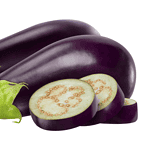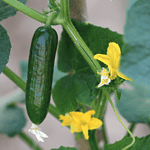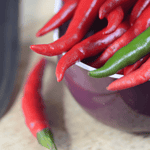Introduction Cultivating Asparagus

Embarking on the journey of cultivating asparagus is an endeavor that promises both culinary delight and agricultural satisfaction. Asparagus, renowned for its tender spears and unique flavor, has been cherished for centuries as a prized vegetable.
This perennial crop not only graces gourmet tables but also offers a resilient addition to home gardens and commercial farms alike. Cultivating asparagus requires careful attention to soil preparation, planting techniques, and long-term care, but the rewards are bountiful harvests and a perennial presence in your garden for years to come.
In this guide, Cultivating Asparagus, we will delve into the art and science of cultivating asparagus, exploring the essential steps and considerations that ensure a thriving and productive asparagus patch. Whether you’re a seasoned gardener or a novice enthusiast, join us on this journey to unlock the secrets of successfully cultivating this versatile and delectable vegetable.
How to Plant Asparagus
Asparagus, a perennial vegetable known for its delectable spears, requires careful attention from planting to harvest. To ensure a successful asparagus bed, follow these comprehensive steps:
- Selecting the Right Variety: Begin by choosing a variety suited to your climate and soil conditions. Varieties like Mary Washington, Purple Passion, and Jersey Giant are popular choices.
- Preparing the Soil: Asparagus thrives in well-drained, nutrient-rich soil. Enhance fertility by incorporating compost or well-rotted manure into the soil. Aim for a soil pH between 6.0 and 7.0 to create optimal growing conditions.
- Planting Depth and Spacing: Dig trenches that are 12-18 inches deep, placing the crowns (root systems) at the base. Space the crowns 12-18 inches apart and cover them with soil. This establishes a conducive environment for healthy growth.
- Watering: Maintain consistent soil moisture, avoiding waterlogging. Regular watering is crucial, particularly during the growing season when the plant is actively developing.
- Patience is Key: Asparagus requires time to establish itself. Resist the temptation to harvest during the first year, allowing the plant to focus on developing a robust root system.
How Long Does It Take to Grow Asparagus?
Asparagus is not a crop for those seeking immediate gratification. Typically, it takes two to three years for asparagus plants to become fully established and ready for regular harvesting. This extended timeframe is an investment in future yields.
Where is the Best Place to Plant Asparagus?
Optimal sunlight is crucial for asparagus growth. Choose a sunny location that receives at least 6-8 hours of direct sunlight daily. Additionally, ensure the chosen spot has good drainage to prevent waterlogging, which can be detrimental to asparagus plants.
What is the Easiest Way to Grow Asparagus?
Success in growing asparagus lies in providing the right conditions from the start. Choose a suitable variety, prepare nutrient-rich soil, adhere to the correct planting depth and spacing, and exercise patience during the initial establishment period.
How Many Asparagus Do You Get from One Plant?
A mature asparagus plant can yield approximately 8-10 spears per season. The actual yield may vary based on factors such as the variety of asparagus, soil fertility, and specific growing conditions.
How to Mulch and Water Your Asparagus
Mulching is a vital aspect of asparagus care, serving multiple purposes such as retaining soil moisture, suppressing weeds, and regulating soil temperature. Apply a layer of organic mulch around asparagus plants, and ensure consistent watering to maintain soil moisture levels.
How to Harvest Your Asparagus

Harvesting asparagus requires precision. Once the spears reach a height of 6-8 inches, use a sharp knife to cut them just below the soil surface. Cease harvesting when spears become thin, allowing the plant to divert energy toward the next growing season.
How to Solve Pest Problems on Your Asparagus
Common pests, including aphids, asparagus beetles, and slugs, can pose a threat to asparagus plants. Utilize organic pesticides or insecticidal soap to manage pest populations. Regularly inspect plants, promptly removing any affected foliage to prevent the spread of diseases.
Soil pH and Fertility for Your Asparagus
Maintaining an optimal soil pH between 6.0 and 7.0 is crucial for asparagus health. Regularly test the soil and amend it with lime if needed. Fertilize in early spring with a balanced fertilizer, and consider side-dressing with compost during the growing season to boost soil fertility.
Conclusion Cultivating Asparagus
Growing asparagus is a rewarding endeavor that demands attention to detail and a commitment to long-term care. By following these guidelines, you can enjoy a bountiful harvest of this flavorful and nutritious vegetable for years to come.
FAQ Cultivating Asparagus
Q: Can I grow asparagus in containers?
A: While challenging, growing asparagus in containers is possible with a spacious, deep container and meticulous care. However, for optimal results, planting in the ground is recommended.
Q: How do I store harvested asparagus?
A: For the best flavor, refrigerate freshly harvested asparagus spears and use them within a few days. Alternatively, blanch and freeze them for extended storage.
Q: Do I need to replant asparagus every year?
A: No, asparagus is a perennial vegetable. Once established, it can produce harvests for 15 years or more with proper care, eliminating the need for yearly replanting
Latest Posts
- How to Plant Mushroom Seeds for Maximum Germination

- How to Plant Lettuce Seeds for Maximum Germination

- How to Plant Kale Seeds: A Step-by-Step Guide to Maximum Germination Success!

- How to Plant Eggplant Seeds: A Step-by-Step Guide to Maximum Germination Success!

- How to Plant Cucumber Seeds for Maximum Germination

- How to Plant Chili Pepper Seeds for Maximum Germination





